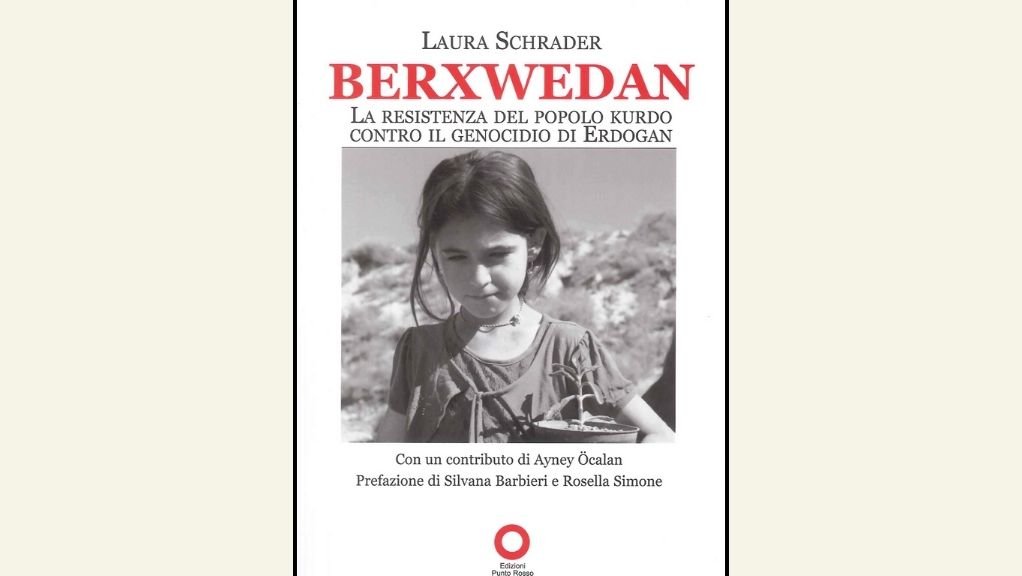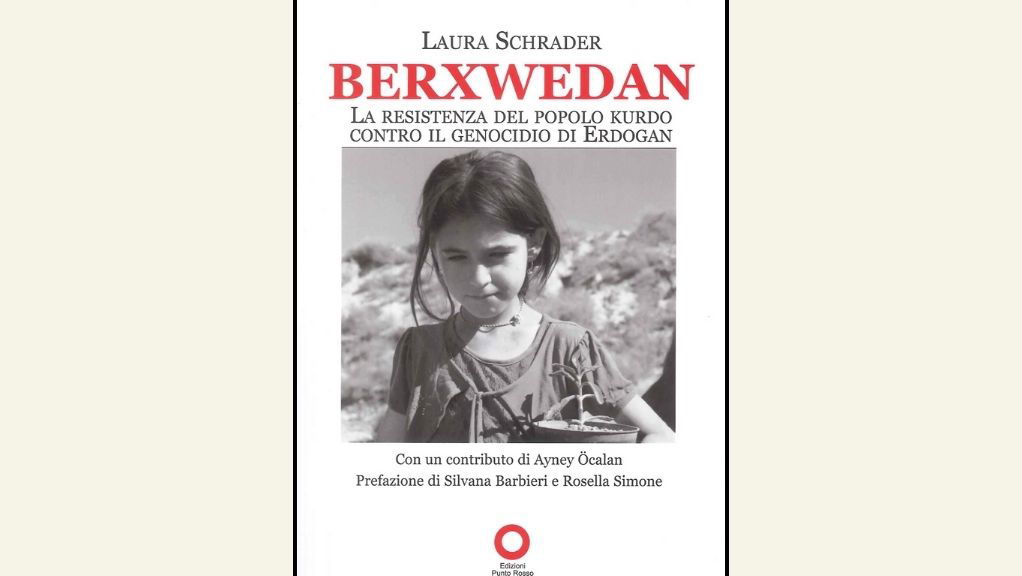Berxwedan is a powerful reconstruction of the history, politics and revolutionary drive of the Kurdish people. The author, Laura Schrader, meticulously recounts the last century in which this people was divided, persecuted and fought, but at the same time always seemed resilient and determined to fight for its own self-determination. Berxwedan is a testimony that can only be given to us by those, like Laura Shrader, who have spent years as a journalist in the field in the places he reports.
Silvia Cegalin
“Kurds have no friends except in the mountains,” says a Kurdish proverb. A saying that, unfortunately, embodies a brutality reality, given that the Kurdish people were – and are – among the most persecuted in the world. The Kurds are a broken, betrayed and landless people.In the Treaty of Lausanne of 1923 lies the seed of the elimination of Kurdistan in favor of Turkey, which reconquered the territories denied to it by the Treaty of Sèvres (1920). With this pact, Kurdistan is no longer a state and what is left of it is divided between Turkey, Syria, Iran and the “front” Kingdom of Iraq created by London. Kurdistan is still divided into: Bakur (Northern Turkey), Bashur (in Iraq), Roijhelat (Eastern Iran), Rojava (Western Syria).
The Kurdish people have been denied the right to self-determination and existence, and the suffering they endured over the centuries has been forgotten.
Because of this Berxwedan. The Kurdish people’s resistance against Erdogan’s genocide (Edizioni Punto Rosso, Milan, 2023) by Laura Schrader, a journalist who has been with the Kurdish people and their struggles since the late 1970s, so much so that she has become one of the most important Italian journalists specializing in the subject, it is important because it brings to light facts, events and characters often forgotten, forced into the shadows and sometimes unknown or willfully ignored. Berxwedan Therefore, try to restore justice and dignity to the Kurds by placing them at the center of history and not on the sidelines.
Through the deep meaning of words and their etymology, Schrader reconstructs the history of the Kurdish resistance, from its roots to the multiple forms it has taken over time. A mandatory and necessary resistance to continue to exist in one’s identity as a people and to face persecution and genocide by regimes, especially Erdogan’s Turkey.
The leading symbol of this text is precisely the term Berxwedan, which consists of ber – give xwe – yourself and dan – in front of. Words that together form the word resistanceresistance which as the term states dan, It is not static, but projected forward, towards the future and full of propulsive power And with the same energy in the book there are faces and stories of Kurdish personalities who have marked the destiny of this people and shaped the revolution. Among them, the figures of Abdullah are iconic THECalan and Sakine Cansiz (Heval Sara), characters to whom Schrader devotes two chapters.
Abdullah Ocalan, Kurdish philosopher and revolutionary, founder of the Kurdistan Workers’ Party (PKK), remains a fundamental figure today for Kurds, who recognize in him the embodiment of the ideals of democratic confederation, peace and justice. His portrait, the author recalls, was raised behind the shoulders of Kurdish fighters after the capture of Raqqa, the last stronghold of the Islamic State in Syria. Ocalan has been incarcerated for nearly 25 years in Imrali prison in Turkey, and as Schrader recalls, in 2020 Turkey rejected 96 visit requests submitted by the Kurdish leader’s lawyers.
Thanks also to the presence of a contribution from Ayney Öcalan’s niece, the text repeats the phases that marked the kidnapping and imprisonment of the Kurdish leader who had to leave Syria (where he was a refugee for years) due to pressure from the Turkish government. After fleeing to Russia, in November 1998 he arrived in Rome, but from here too, after an initial hero’s welcome, he was asked to leave because of two arrest warrants (one German, the other Turkish). In February 1999, on the advice of the Greek government, he will travel to Kenya where he will be kidnapped and handed over, as a terrorist, to Ankara’s agents, an action that will be applauded by Bill Clinton and Benjamin Netanyahu who congratulated Turkey. , thus confirming the weight that the Ankara-Washington-Jerusalem axis had in this case, which went down in history as “treason”.
The saying “Kurds have no friends except in the mountains” proves true in this case as well.
Another symbolic story about Kurds and Kurds that is fundamental to this book is that of Sakine Cansiz (Heval Sara). Sara will be killed on January 9, 2013 in an attack (actual execution) in Paris at the Kurdistan Intelligence Center where she served, along with her comrades Fidan Dogan (Rojbin) and Leyla Saylemelez (Ronahi). Among the founders of the PKK and the Kurdish women’s movement, as well as a rebel of the Kurdish liberation movement, Sakine was arrested by Turkish authorities in 1979 and resisted torture for ten years.
Schrader writes: “The force of his example is such that, while in the other men’s and women’s sections it happens that prisoners are subjected to torture, in the women’s section where Sakine is found no woman betrays.”
Omer Guney, who had been ill for some time, who was acting on the orders of the Turkish services, will be charged with the execution of Heval Sarah and her companions. Those responsible were never brought to trial and continue to remain unpunished.
The cases of THECalan and Sakine represent the very experience of the Kurdish people: abandoned, betrayed and forgotten. Just as it happened to their leaders, the Kurds have also experienced this treatment by world powers firsthand.
Berxwedan he goes on to devote a few chapters to denouncing the genocide perpetuated by the Erdoğan regime, while describing the “resistance” that the Kurdish people have put up over the years in trying to continue to exist.
Important among these “resistances” is his silent protest Saturday Mothers (Cumartesi Anneliri), which emerged on 27 May 1995 to demand justice and truth regarding the disappeared and the victims of political assassinations whose perpetrators were protected by the state (in Turkish faili mechul). Women and mothers arrive from all over Kurdistan, even from remote villages, clutching to their chests the photograph of a loved one who disappeared or was murdered during the coup of the 1980s and during the turbulent 1990s, defying the police in Galatasaray Square, Istanbul.
Vigils will be suspended in 1999, to continue in Kurdistan and abroad.
In the meantime, the Turkish regime will continue its war of extermination against the Kurds, and in 2011, when Erdogan is prime minister, they will start again air and ground operations in Mount Qandil and other areas of Northern Iraq, and later in Sirnak. In 2015, Mothers’ Rally, which the Turkish government considered a terrorist organization, was banned and women who gathered to vigil were brutally dismissed by officers and arrested. Among them, the author recalls, there is Emine Ocek: despite her 82 years she is attacked by the police.
It is clear from these stories that anyone who tries to assert Kurdish rights is being silenced. The Turkish regime is an enemy of the Kurds, as is the terrorist organization ISIS. It is no accident that the author titles a chapter Türkiye and Isis, the same vision of the worldquoting the title of a research paragraph by Columbia University’s Institute for the Study of Human Rights published in November 2014.
This choice is not accidental, Schrader actually chose the most neutral, uncontroversial of the documentation he takes as reference for this book, coming from major institutions (UN, EU…) or American and Western universities. In Chapter Turkish jihadist colony of Afrinfor example, referring to the testimonies collected by Yale Journal of International Affairsreports the sexual violence and torture suffered by minors and young people in Afrin after the Turkish occupation and the military operation called Olive branch (2018). This The operation led to the destruction of Afrin’s territory and forced 70% of the population to live in refugee camps. Relying on institutional sources it highlights, perhaps even more harshly, the tragic nature of the events to which the Kurdish people had to submit, and leaves no room for interpretive doubt.
Berxwedanconcluding, he disperses political and historical-social events, reconstructing through the symbols of the Kurdish resistance (the red scarf worn by Ayse Denizla, Zehra Dogan’s “Turkish Guernica”, Nudem Durak’s guitar) the story of a people finding refuge in the hiding places of her mountains
Did you like this article?
To continue bringing you quality content, MicroMega needs your support: DONATE NOW.



